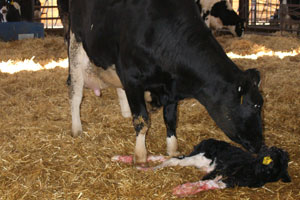With so many cattle vaccines available – nearly 125 different vaccines are currently on the market – there is a considerable amount of information, and misinformation, out there. To help clear up some misconceptions, Vic Cortese, DVM, PhD, DABVP and Pfizer Animal Health, bust nine common vaccine myths.

If a vaccine is licensed by the USDA, it will work all the time in all cattle.
False. The fact that a vaccine is licensed and available doesn’t mean it always works.
There are many reasons why a vaccine might not work, including:
• It was used on the wrong age of animal.
• The wrong disease outcome was measured.
• It was used on the wrong species.
• The disease was overwhelming.
• Animals were already sick.
“Annual vaccination” means a year of immunity.
False. We don’t really know the duration of immunity.
The USDA may not require duration of immunity studies. If a product successfully demonstrates efficacy at 14 to 35 days after the last vaccination, they are automatically given annual revaccination labels. This does not necessarily mean the animal may be protected for 12 months.
The higher the antibody titer (level) after vaccination, the better the protection.
False. Titers may be a poor indicator of level of protection.
There are many different antibodies involved in protection and non-protective antibodies can also be measured.
Vaccines are not effective in young calves because of blocking by maternal antibodies.
False. The role of maternal antibody interference is not clearly defined.
Depending upon the disease, the type of vaccine, the pre-existing antibody levels and the route of administration, some vaccines may be blocked by maternal antibodies, but others are not.
Generally, viral vaccines are not inhibited by maternal antibodies. Two exceptions are bovine viral diarrhea (BVD) and parvovirus. And as a general rule, bacterins may be blocked by maternal antibodies. A noteworthy exception is Lepto hardjo-bovis.
Many vaccines for calves are not inhibited by maternal antibodies, so ask your vaccine supplier to see efficacy studies done in calves with maternal antibodies if it is a concern.
Rotation of vaccines gives more complete protection.
False. The descriptions surrounding vaccine rotation, such as “optimal antigenic diversity,” “rotation means the broadest protection,” “avoid vaccine inbreeding” and “antigenic diversity is the key,” make it sound necessary.
The fact is, there are no challenge studies to support the idea of vaccine rotation. It also disregards differences in vaccines and is solely focused on BVD vaccines. There is an impracticality of vaccine rotation because many animals are in different stages of vaccination at any given time.
Inactivated vaccines are safer than modified-live vaccines.
False. The truth is, killed vaccines may cause more adverse reactions in animals because they contain more antigen mass, consist of more biologic components and rely on adjuvants.
BVDV congenital infection protection is more important than persistent infection protection.
False. Persistently Infected (PI) animals are what we must prevent to control BVD.
The true definition of congenital infection protection is exposure of the fetus in a non-immune pregnant cow during any stage of pregnancy. But it is often used to define exposure during the third trimester. This causes calves to be born with self-made BVD antibodies. The impact of later-term exposure on the health of newborn calves is not clear.
The timing of scours vaccines in the cow is not important.
False. The timing of the dam’s scours vaccination is critical to get maximum protection for the calf, and is crucial to good colostrum management.
The best time to vaccinate for scours is three to four weeks prior to calving. This timing will help ensure the maximum number of colostral antibodies are transferred to the calf through the colostrum, because peak immunity levels occur at this time.
Intranasal vaccines provide superior protection in cattle.
False. Intranasals may provide similar protective capabilities as systemic vaccination.
Intranasal vaccination may be used for calves:
• whose immune systems have already been compromised
• that are heavily stressed
• that are in the face of disease outbreaks
As a result, safety of their use is critical because it usually comes at a time when disease outbreaks are anticipated in young animals that are already heavily stressed. PD
—Excerpts from Pfizer Animal Health press release




